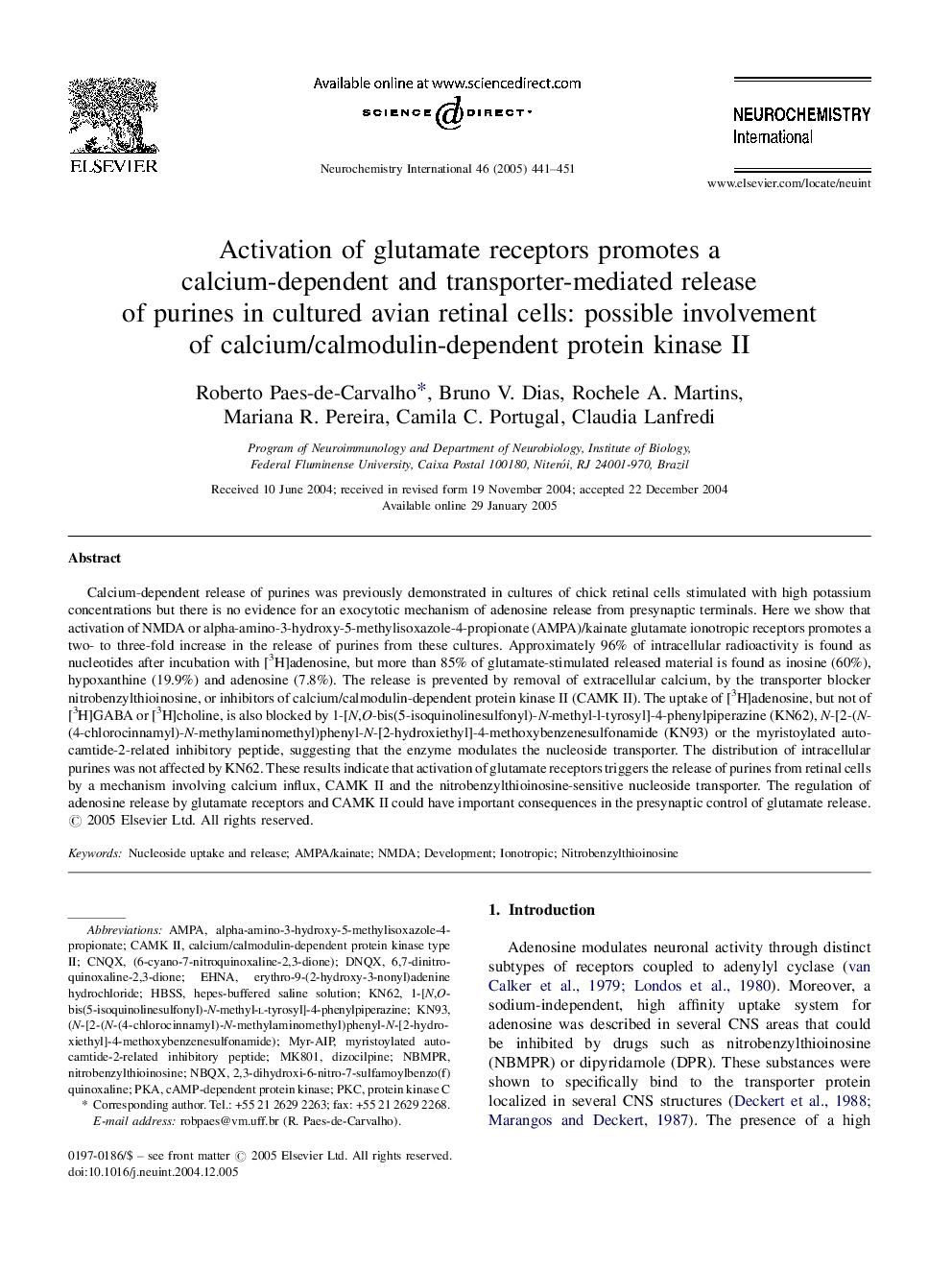| Article ID | Journal | Published Year | Pages | File Type |
|---|---|---|---|---|
| 10958399 | Neurochemistry International | 2005 | 11 Pages |
Abstract
Calcium-dependent release of purines was previously demonstrated in cultures of chick retinal cells stimulated with high potassium concentrations but there is no evidence for an exocytotic mechanism of adenosine release from presynaptic terminals. Here we show that activation of NMDA or alpha-amino-3-hydroxy-5-methylisoxazole-4-propionate (AMPA)/kainate glutamate ionotropic receptors promotes a two- to three-fold increase in the release of purines from these cultures. Approximately 96% of intracellular radioactivity is found as nucleotides after incubation with [3H]adenosine, but more than 85% of glutamate-stimulated released material is found as inosine (60%), hypoxanthine (19.9%) and adenosine (7.8%). The release is prevented by removal of extracellular calcium, by the transporter blocker nitrobenzylthioinosine, or inhibitors of calcium/calmodulin-dependent protein kinase II (CAMK II). The uptake of [3H]adenosine, but not of [3H]GABA or [3H]choline, is also blocked by 1-[N,O-bis(5-isoquinolinesulfonyl)-N-methyl-l-tyrosyl]-4-phenylpiperazine (KN62), N-[2-(N-(4-chlorocinnamyl)-N-methylaminomethyl)phenyl-N-[2-hydroxiethyl]-4-methoxybenzenesulfonamide (KN93) or the myristoylated autocamtide-2-related inhibitory peptide, suggesting that the enzyme modulates the nucleoside transporter. The distribution of intracellular purines was not affected by KN62. These results indicate that activation of glutamate receptors triggers the release of purines from retinal cells by a mechanism involving calcium influx, CAMK II and the nitrobenzylthioinosine-sensitive nucleoside transporter. The regulation of adenosine release by glutamate receptors and CAMK II could have important consequences in the presynaptic control of glutamate release.
Keywords
Related Topics
Life Sciences
Biochemistry, Genetics and Molecular Biology
Cell Biology
Authors
Roberto Paes-de-Carvalho, Bruno V. Dias, Rochele A. Martins, Mariana R. Pereira, Camila C. Portugal, Claudia Lanfredi,
